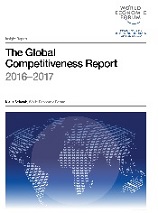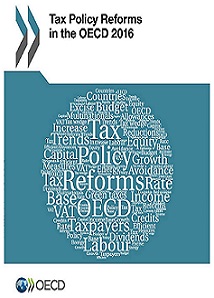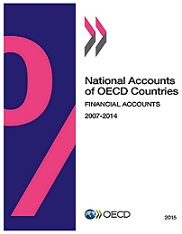Schwab, K., (2016), “The Global Competitiveness Report 2016–2017”, World Economic Forum, 28 September The Global Competitiveness Report 2016–2017 is being launched at a time of rising income inequality, mounting social and political tensions, and a general feeling of uncertainty about the future. Growth remains persistently low: commodity prices have fallen, as has trade; external imbalances are increasing; and government finances are stressed. However, it also comes during one of the …Read More
Why far right parties do well at times of crisis: the role of labour market institutions
Vlandas, Tim, Halikiopoulou, Daphne, (2016), “Why far right parties do well at times of crisis: the role of labour market institutions”, European Trade Union Institute, July The far right is on the rise in many western and eastern European countries. The 2008 Eurozone crisis is an obvious source of blame for this phenomenon; indeed, a large body of literature suggests that economic malaise prompts support for far right parties. This conventional wisdom, however, is …Read More
Tax Policy Reforms in the OECD 2016
OECD, (2016), “Tax Policy Reforms in the OECD 2016”, OECD Publishing, 22 September This is the first edition of “Tax Policy Reforms in the OECD”. This annual series of reports aims to track and compare tax policy developments over time across OECD countries. This year’s edition focuses on the tax reforms that were introduced in 2015 and identifies the most significant tax policy reforms as well as common tax policy …Read More
Public Investment Multipliers in EU Countries: Does the Efficiency of Public Sector Matter?
Papaioannou, Sotiris K., (2016), “Public Investment Multipliers in EU Countries: Does the Efficiency of Public Sector Matter?”, Centre of Planning and Economic Research, February This study examines whether differences in public sector efficiency are associated with diverging effects of public investment on growth. At first stage, we estimate public investment multipliers for each country of the European Union (EU). Their size varies considerably across countries. Then we construct measures of public …Read More
An inflation-predicting measure of the output gap in the euro area
Jarociński, Marek, Lenza, Michele, (2016), “An inflation-predicting measure of the output gap in the euro area”, ECB, Working Paper No 1966, September Using a small Bayesian dynamic factor model of the euro area we estimate the deviations of output from its trend that are consistent with the behavior of inflation. We label these deviations the output gap. In order to pin-down the features of the model, we evaluate the accuracy of …Read More
Fragmented Politics and Public Debt
Crivelli, Ernesto, Gupta, Sanjeev, Mulas-Granados, Carlos, Correa-Caro, Carolina, (2016), “Fragmented Politics and Public Debt”, IMF, Working Paper No. 16/190, 19 September In this paper, we study the impact of fragmented politics on public debt—in particular, between two consecutive legislative elections. Using data for 92 advanced and developing countries during 1975-2015, we find a positive association between political fragmentation and public debt changes. Corruption magnifies the effects; with higher perceived corruption, political fragmentation …Read More
What Makes a Good ʽBad Bankʼ? The Irish, Spanish and German Experience
Cas, Stephanie Medina , Peresa, Irena, (2016), “What Makes a Good ʽBad Bankʼ? The Irish, Spanish and German Experience”, European Commission, Discussion Paper 036, September This paper examines the experience of three asset management companies (AMCs) or ʽbad banksʼ established in the euro area following the 2008 global financial crisis. Specifically, it studies NAMA, Sareb and FMS Wertmanagement (FMS). These AMCs were set up to purchase growing nonperforming loans on banks’ …Read More
National Accounts of OECD Countries, Financial Accounts 2015
OECD, (2016), “National Accounts of OECD Countries, Financial Accounts 2015”, OECD Publishing, 2 September The National Accounts of OECD Countries, Financial Accounts includes financial transactions (both net acquisition of financial assets and net incurrence of liabilities), by institutional sector (non-financial corporations, financial corporations, general government, households and non-profit institutions serving households, total economy and rest of the world) and by financial operation. Country tables are expressed in national currency. Data …Read More
OECD Sovereign Borrowing Outlook 2016
OECD (2016), “OECD Sovereign Borrowing Outlook 2016”, OECD Publishing, 6 September The OECD Sovereign Borrowing Outlook provides regular updates on trends and developments associated with sovereign borrowing requirements, funding strategies, market infrastructure and debt levels from the perspective of public debt managers. The Outlook makes a policy distinction between funding strategy and borrowing requirements. The central government marketable gross borrowing needs, or requirements, are calculated on the basis of budget …Read More
The 2016 Stability and Convergence Programmes: An Overview and Implications for the Euro Area Fiscal Stance
European Commission, (2016), “The 2016 Stability and Convergence Programmes: An Overview and Implications for the Euro Area Fiscal Stance”, European Commission, Institutional Paper 034, September This paper provides an overview of the current fiscal policy in the euro area and the EU, and at Member State level. It presents an overview of Member States’ 2016 Stability and Convergence Programmes (SCPs) as well as an analysis of the recent and prospective fiscal stance in …Read More








